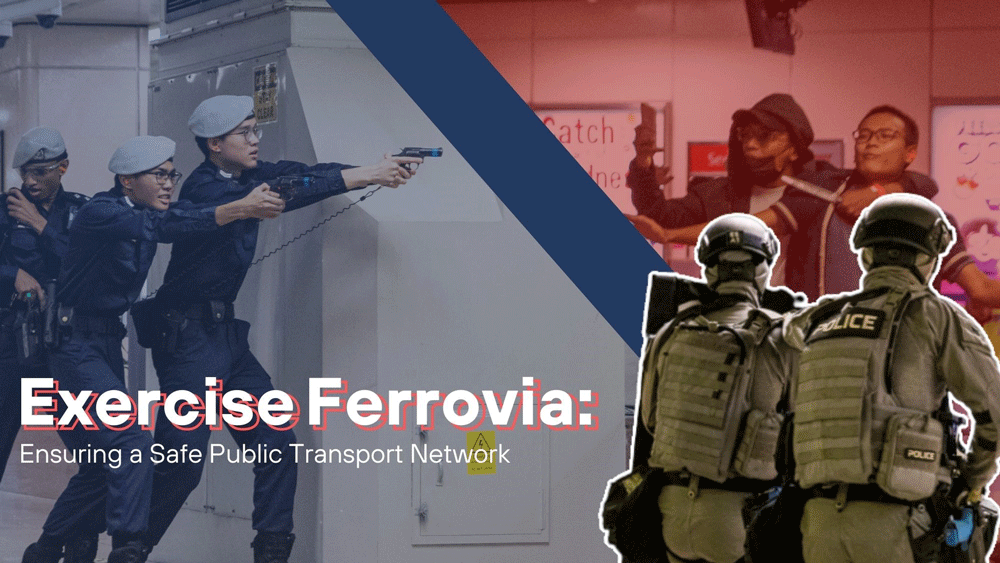On 8 December 2001, the
Internal Security Department (ISD) launched a security operation against the Jemaah Islamiyah (JI) network in Singapore. The operation involved dozens of teams of investigators, research analysts, engineers and field officers working around the clock, and included two key phases of local arrests in 2001 and 2002. The operation effectively crippled the local JI network and thwarted multiple plots by it to carry out terror attacks in Singapore. The operation also sounded the alarm on JI’s clandestine networks across Southeast Asia, as well as its connections to Al Qaeda, which was responsible for the 9/11 attacks. On the 20th anniversary of ISD’s efforts, here are six things you should know about it.
 1. Terror and violence: What the JI network in Singapore wanted
1. Terror and violence: What the JI network in Singapore wanted
Historically, JI traces its roots to the Darul Islam, an organisation that emerged in the 1940s. During the 1980s, they regrouped and renamed themselves JI, and between 1988 to 1989, Ibrahim Maidin became the organisation’s first Singapore leader.

JI members had taken video of Yishun MRT Station and its surroundings in preparation for their attacks. SCREENSHOTS: ISD
JI’s ultimate goal is to establish an Islamic state in Southeast Asia through acts of terror and violence. The organisation had planned to attack Singapore since the mid-1990s, and preparations for these attacks intensified after 9/11. After ISD launched its security operation against JI, it found that JI had identified close to 80 targets in Singapore.
2. Striking at the heart: Yishun MRT Station was just one of JI’s many targets
One of the most prominent JI targets was Yishun MRT Station. JI members drew maps of the station and used a video camera to film it and its surroundings, paying close attention to locations where bombs could be placed.

Notes recovered in Afghanistan by American forces. The notes included details about Yishun MRT Station, Sembawang Wharf and the route taken by the shuttle bus ferrying American military personnel to the MRT station. PHOTOS: ISD
The JI plot involved attacking a shuttle bus that ferried American military personnel and their families from Sembawang to Yishun MRT Station. Other targets included key military installations like MINDEF Headquarters at Bukit Gombak. JI surveyed its perimeter and entrance/exit points on several occasions under the cover of courier delivery services. One JI member even tailed a MINDEF officer from MINDEF Headquarters to Tampines to consider the feasibility of placing explosives in the officer’s car and detonating them when the car entered MINDEF’s compound.

A sports bag with containers of sulfur powder found in the possession of a JI member. Sulfur is one of the major components used to synthesis explosives. PHOTO: ISD
JI also planned to attack the American and Israeli embassies; the Australian and British High Commissions; and commercial buildings housing American firms. These attacks were scheduled to take place as early as December 2001. Right before ISD arrested the JI members, the plotters had even taken steps to procure 17 tonnes of ammonium nitrate for the manufacture of truck bombs. Had any of these attacks succeeded, many innocent lives would have been lost.
3. In the shadows: JI members employed a range of techniques to avoid getting caught
To avoid detection by the authorities, JI adopted sophisticated security protocols and practised counter-surveillance tradecraft. For example, JI members used multiple aliases to hide their identities.

The “BMTDK” numerical code system used by JI members. PHOTO: ISD
To hide their activities, JI members also employed a “BMTDK” numerical code system to hide details of their meetings:
- B:
Bila (when)
- M:
Masa (time)
- T:
Tempat (place)
- D:
Daripada (from who)
- K:
Kepada (to who)
JI members were also prepared to escape Singapore in the event of a crackdown. For instance, between 2000 and 2001, often under the guise of fishing trips, JI members conducted boating expeditions in the Straits of Johor. They surveyed the frequency and routes of Police Coast Guard patrols and attempted to identify ideal escape routes to Malaysia.
4. Deadly force: JI wanted to kill ISD officers
Investigations revealed that at least one local JI member had considered kidnapping ISD officers to demand the release of fellow members who were in detention. Senior JI members also repeatedly mentioned that they wouldn’t hesitate to kill ISD officers if they were prevented from carrying out their plans, and were prepared to use deadly force to resist arrest.

A range of weapons were seized from JI members. These were used in training sessions for knife-throwing, fighting and jungle survival. PHOTOS: ISD
JI also established a military training unit to take charge of its security protocols and training. JI members participated in physical and field training; weapons and explosives handling; and learnt guerrilla warfare and survival techniques.
5. False teachings: JI members used “adventure camps” to target children and teenagers for recruitment
ISD found that JI had its own recruitment and religious indoctrination system. From 1995 to 1999, JI organised adventure camps (Tamrin Kanak-Kanak) for children aged between seven and 17. Marketed as a programme to impart religious values to children, the camps were advertised in the local media and typically ran for three days. Camp fees also served to raise funds for JI.

Details of the JI-led camp programme for children and youths. PHOTO: ISD
Some 300 children were estimated to have participated in these camps, which took place during the June and December school holidays. Besides activities like trekking, archery and abseiling, the camp programme also included sermons and religious recitals.
6. Creating animosity: JI sought to disrupt ties between Singapore and Malaysia
One of the key JI leaders in the region, Hambali (currently in custody at Guantanamo Bay), was keen to create further chaos by provoking animosity between Singapore and Malaysia.

Photographs taken during reconnaissance of the PUB Woodlands Booster Station, Bukit Panjang Service Reservoir and the water pipeline at Bukit Timah Nature Reserve. PHOTOS: ISD
JI detainee “Daniel” (not his real name) related that he was assigned to conduct reconnaissance and take photographs of a number of security-sensitive locations in Singapore. “I recall… the purpose of casing the pipelines was to blow them up in order to cut the water supply between Singapore and Malaysia,” said Daniel.
By doing so, Hambali sought to take advantage of the instability that arose to overthrow the governments of Singapore and Malaysia and establish an Islamic state.
20th Anniversary of ISD’s Security Operation Against JI in Singapore
On 8 December 2001, ISD launched a security operation against the JI network in Singapore. Twenty years on, JI and its well-developed attack plots remain Singapore’s closest shave with transnational Islamist terrorism. Had the group succeeded in their plans, there would have been catastrophic consequences in terms of the loss of lives and damage to Singapore’s communal harmony and social fabric.
ISD’s operations against the JI didn’t cease with the two phases of local arrests in 2001 and 2002. ISD continued to work tirelessly behind the scenes over the next decade, hunting down Singapore JI fugitives who had fled overseas. At the same time, together with its community partners, ISD spearheaded a holistic rehabilitation approach for the JI detainees and their family members, comprising religious, psychological and social rehabilitation, to ease their reintegration into Singapore society.
While the Singapore JI network has been effectively dismantled by ISD, the regional JI network is still active, and will continue to present a serious long-term security threat to Singapore. ISD continues to keep a close watch on developments that could heighten the threat posed by JI and other terrorist groups.
For more on ISD’s operation against JI, read the
White Paper – The Jemaah Islamiyah Arrests and the Threat of Terrorism (2003) and
20th Anniversary of ISD’s Operation Against Jemaah Islamiyah in Singapore (2021).














